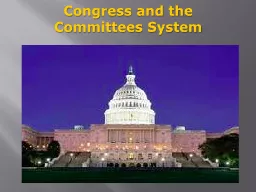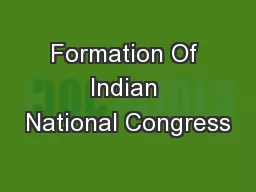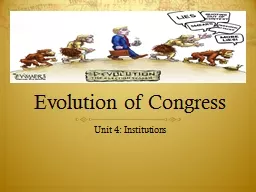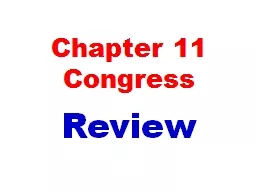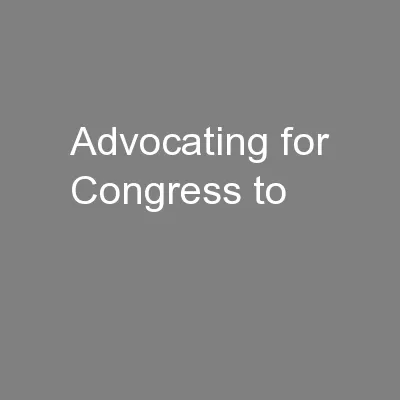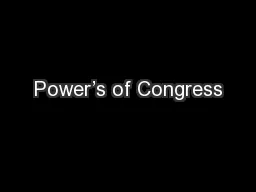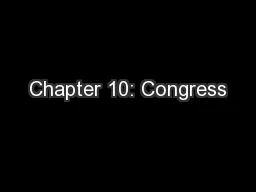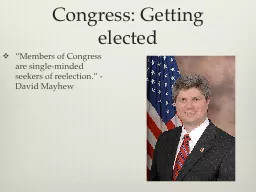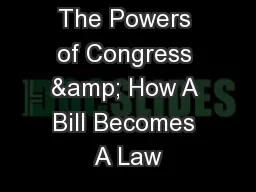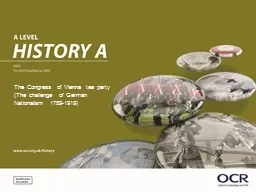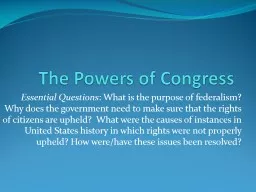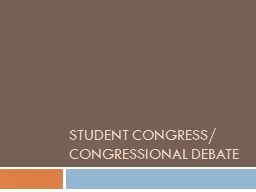PPT-Congress and the
Author : tatiana-dople | Published Date : 2016-07-21
Committees System Committee System Basics 1 Allows for the division of labor so Congress can consider a vast number of bills each year 110 th Congress Bills House
Presentation Embed Code
Download Presentation
Download Presentation The PPT/PDF document "Congress and the" is the property of its rightful owner. Permission is granted to download and print the materials on this website for personal, non-commercial use only, and to display it on your personal computer provided you do not modify the materials and that you retain all copyright notices contained in the materials. By downloading content from our website, you accept the terms of this agreement.
Congress and the: Transcript
Download Rules Of Document
"Congress and the"The content belongs to its owner. You may download and print it for personal use, without modification, and keep all copyright notices. By downloading, you agree to these terms.
Related Documents

